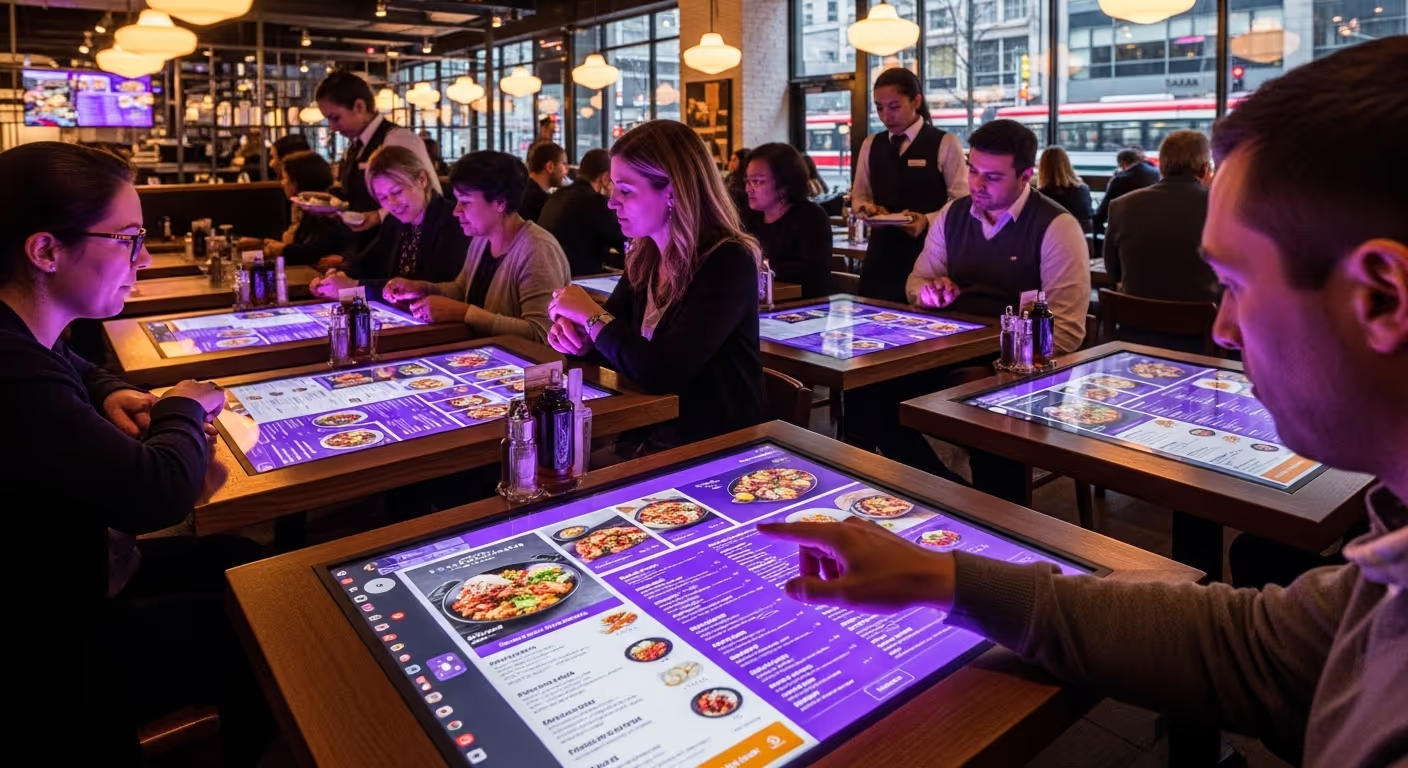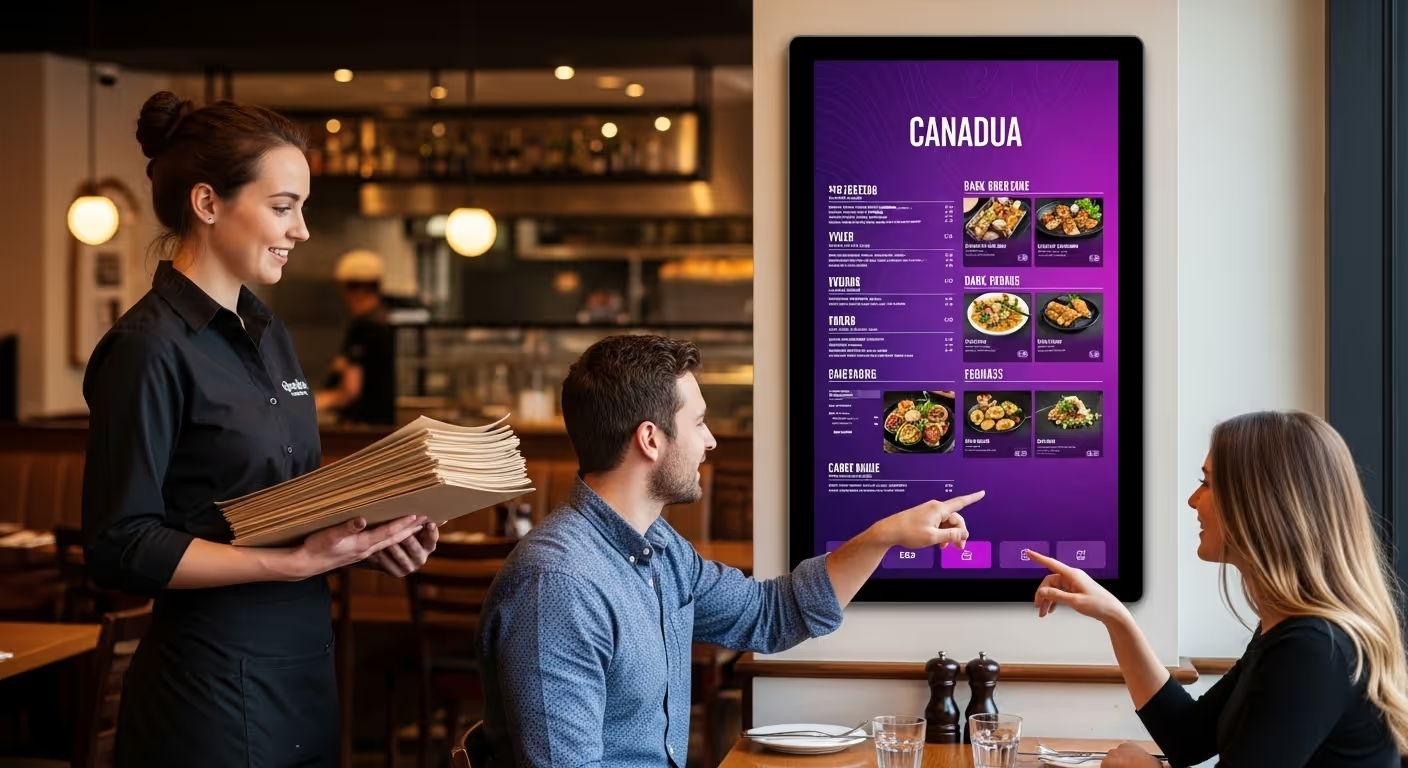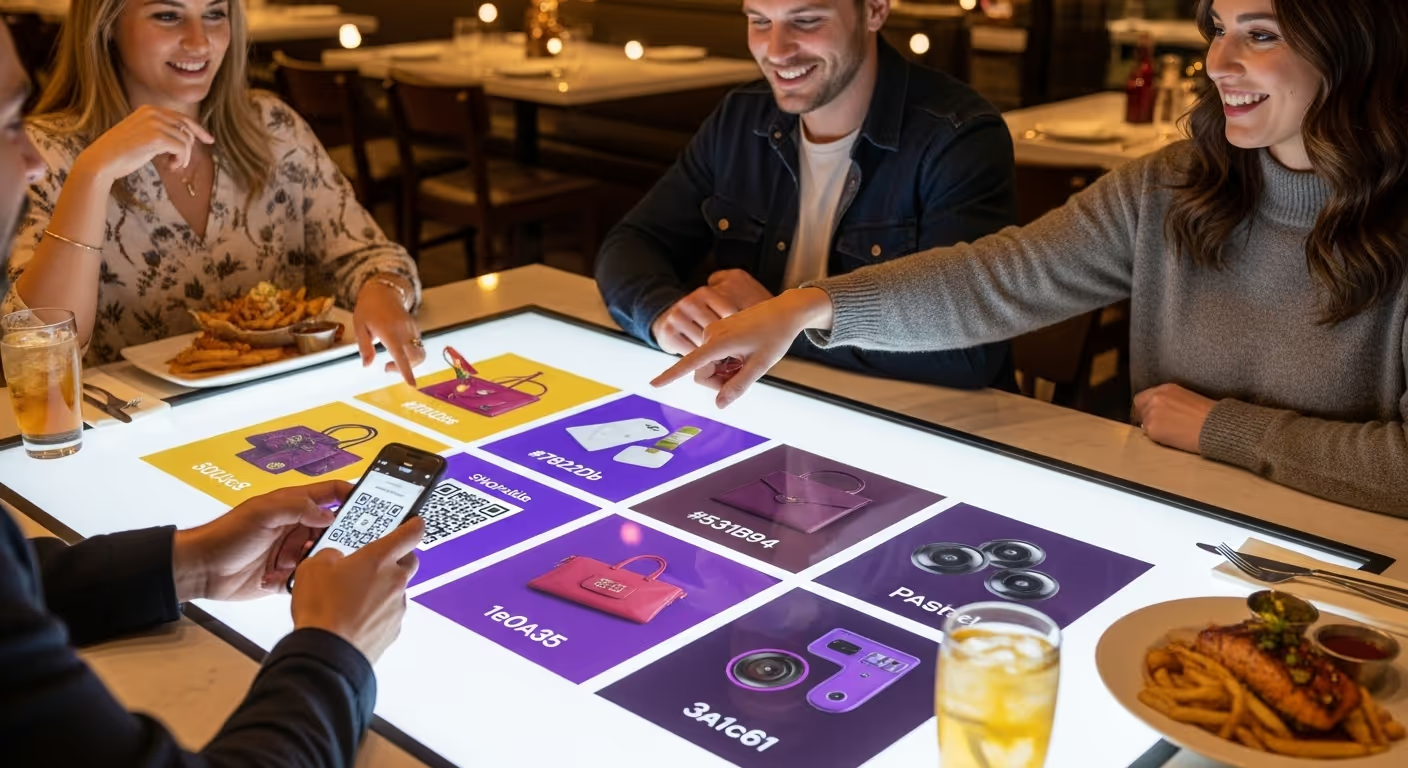Why tabletop screens matter in restaurants
Tabletop screens are changing the way Canadian restaurants connect with guests. More than just digital menus, they act as a sales tool, a customer service channel, and a source of new revenue. For owners, the screens are an investment that pays off through higher orders and better guest satisfaction.
Upselling made simple
Upselling can be tricky for staff, especially during busy shifts. Tabletop screens handle part of the job by showing timely promotions that match guest behavior. A guest finishing their main dish may see a dessert suggestion. A table ordering drinks might see a reminder about cocktails or wine specials. This automation creates consistent upsell opportunities without adding pressure on servers.
Numbers that prove the impact
- Restaurants report 10–15 upsells per day from targeted screen promotions
- One Canadian venue saw dessert sales rise 18% after installing screens
- Staff tips increased by 27% when guests used screens to explore more options
Enhancing the guest experience
Tabletop screens improve more than just sales. Guests enjoy using them because they add convenience. From browsing visual menus to requesting staff with a tap, the screens make dining smoother. Many guests also prefer the option to scan a QR code and pay directly from their table without waiting for the bill to arrive.
Why guests like it
In surveys, Canadian diners said they valued the mix of speed and clarity the screens provided. Instead of flipping through paper menus or waiting for staff, guests could instantly access what they needed. The result was less friction and a more enjoyable meal.
Extra income from advertisers
While restaurants benefit from direct sales growth, they also earn passive income through ad revenue. Brands pay to appear on these screens, knowing they have a captive audience for over an hour per visit. Restaurants share in this revenue, which typically adds $500–$1,200 per month per location. This helps cover costs and creates an additional profit stream.
Helping staff do more
Servers often juggle multiple tasks, from upselling to taking orders and managing tables. With tabletop screens, some of the work shifts to technology. Guests can request staff when needed, freeing servers to focus on hospitality. Staff no longer feel pressured to upsell, since the screens handle much of the job automatically.
Targeting that works
Tabletop screens don’t just loop ads. They use real-time targeting to make content more relevant. That includes:
- Adjusting promotions by time of day (lunch, happy hour, dinner)
- Customizing content for specific areas of the restaurant (bar, lounge, dining room)
- Connecting ads to live events or weather conditions
This ensures every screen plays content that matches the moment, which makes promotions more effective.
Longer dwell times mean stronger results
One reason tabletop screens work so well in Canada is the average dwell time. Guests often spend more than an hour at the table. That means each impression lasts longer than other digital ads, giving promotions more chances to influence decisions and drive sales.
Reducing menu costs
Restaurants spend thousands every year on paper menus and printed specials. With tabletop screens, updates happen instantly and at no cost. Seasonal changes, new dishes, and limited-time offers can all be displayed without reprinting. This not only saves money but also reduces waste, supporting sustainability goals.
Case study: tips and sales growth
One Canadian bar introduced tabletop screens across their location. Within a month, they saw dessert sales jump by 18% and average tip values increase by 27%. Guests enjoyed the interactive features, while staff appreciated the extra support. The screens paid for themselves through upsells and ad revenue, proving the model works in real-world conditions.
How to get started with tabletop screens
Installing tabletop screens is straightforward. Providers usually manage deployment, content, and support. Restaurants supply their menu and promotions, and the system runs on its own. With ongoing ad revenue and measurable sales growth, tabletop screens quickly become a key part of modern restaurant strategy.
Final thoughts
- Tabletop screens boost sales with smart upselling
- They improve the dining experience for guests
- Staff earn more tips while managing tables more easily
- Restaurants save on printing and earn extra ad revenue
For restaurants in Canada, tabletop screens are more than a trend — they’re a proven way to grow sales, strengthen guest satisfaction, and future-proof the business.






.svg)
.svg)


